
Indoor Vegetables to Plant and Harvest All Year
In today’s fast-paced world, integrating fresh produce into our lifestyles is key. Growing indoor vegetables all year is a smart move! It lets you have a steady supply of healthy food, no matter the weather.
We’ll cover the must-haves, top vegetable picks, and how to make your indoor garden great. This guide is for everyone, from gardening pros to newbies. You’ll learn how to grow a lot of tasty, fresh veggies all year.
Any affiliate links serve to maintain this blog at no extra cost to you. Parts of this post were AI assisted.
Essential Equipment for Your Indoor Vegetable Garden
To grow a successful indoor vegetable garden, you need the right tools. This includes lighting systems, containers, and climate control tools. These items help your plants grow well and give you fresh produce at home.
Lighting Systems and Their Specifications
Lighting is key for indoor gardens. Grow lights come in types like fluorescent, LED, and HID lamps. Each has its own benefits. Choose based on your plants’ needs and the space you have.
Look at light intensity, spectrum, and energy use when picking grow lights. This ensures your plants get what they need.
Container Selection and Growing Mediums
The containers you pick affect your plants’ health and growth. Hydroponic systems and soil containers both work well. The best one depends on the plant you’re growing.
Leafy greens do well in soil, while tomatoes and peppers like hydroponics. Choose the right container and medium for your plants.
Climate Control Tools
Keeping the right temperature, humidity, and air flow is crucial. Humidity controllers and fans help manage these. Also, think about getting a thermostat or temperature sensor to keep things perfect.
With the right equipment, your indoor garden will thrive all year. Enjoy a bountiful harvest from your own home.
| Lighting Type | Advantages | Disadvantages |
|---|---|---|
| Fluorescent | Energy-efficient, good for leafy greens | Limited light intensity, may not be suitable for fruiting crops |
| LED | Energy-efficient, adjustable light spectrum, long lifespan | Higher initial cost, may require additional cooling |
| HID (High-Intensity Discharge) | Powerful light output, suitable for a wide range of vegetables | Higher energy consumption, generate more heat |
Best Indoor Vegetables to Plant and Harvest All Year
Starting an indoor vegetable garden lets you enjoy fresh, tasty produce all year. You can grow everything from leafy greens to herbs in your home. Let’s look at some top indoor vegetables for your garden.
Leafy Greens: Kale, spinach, and Swiss chard grow well indoors. They need little space and can be picked often. This gives you a steady supply of healthy leaves for your meals.
Herbs: Basil, mint, and oregano are easy to grow indoors. They add great flavors to your cooking. These herbs need small spaces, making them perfect for small gardens.
- Microgreens: These small, packed greens are great for indoor gardens. Types like radish, kale, and beets grow well indoors. They’re ready to eat in just a few weeks.
- Dwarf Vegetables: Small varieties like dwarf tomatoes, carrots, and peppers are great for indoor gardens. They taste as good as the big ones but take up less space.
When setting up your indoor garden, think about what each plant needs. Choose the right light, containers, and soil for a good harvest all year. I’ve found this video helpful:
“Growing your own vegetables indoors is a rewarding way to enjoy fresh, healthy produce year-round, even in the smallest of spaces.”
With the right steps, you can turn your indoor area into a lush vegetable garden. It will give you fresh, delicious food all year. Plus, it’s just plain fun to eat what you grow!
Creating the Perfect Indoor Growing Environment
Creating the best growing conditions is key for a thriving indoor garden. Managing temperature, humidity, and air flow is essential. This way, you can grow a lush, productive space that gives you plenty of fresh veggies all year.
Temperature Management
Vegetables grow best at different temperatures. Leafy greens like spinach and lettuce do well in cooler spots, between 60°F to 70°F (15°C to 21°C). Tomatoes and peppers, on the other hand, like it a bit warmer, between 70°F to 80°F (21°C to 27°C). Keeping these optimal growing conditions helps your plants grow their best.
Humidity Control
Humidity is also important for your indoor garden. Most veggies like a humidity of 50% to 70%. Too much humidity can cause fungal diseases, while too little can make plants wilt. Using a dehumidifier or humidifier helps keep the right ventilation systems and humidity for your plants.
Air Circulation Requirements
Good air flow is vital for your plants’ health. Stagnant air can attract pests and diseases. It also makes the air stale and low in oxygen. Adding fans or an air circulation system keeps the air fresh, helping your plants grow well.
By controlling temperature, humidity, and air flow, you can make a perfect space for your veggies. This way, they’ll thrive, no matter the season.
Space-Saving Solutions for Indoor Gardens
Starting an indoor vegetable garden is rewarding but can be tough due to space limits. Luckily, there are smart ways to grow more with less space. These methods help you get the most out of your growing area.
Vertical gardening is a great way to save space. It uses wall space to grow plants in stackable planters and hanging systems. This lets you grow different plants like leafy greens and small tomatoes without taking up too much room.
Window farms are another cool option. They are small, hydroponic systems that hang on walls or windows. These units let you grow many types of plants in tiny spaces, perfect for small homes or offices.
Check out these other ideas:
| Space-Saving Technique | Advantages | Suitable Crops |
|---|---|---|
| Vertical Gardening | Maximizes limited floor space, creates visual interest | Leafy greens, herbs, compact tomatoes, strawberries |
| Stackable Planters | Efficient use of vertical space, customizable layout | Herbs, cherry tomatoes, dwarf vegetable varieties |
| Window Farms | Utilizes unused wall/window space, self-contained hydroponic systems | Leafy greens, herbs, microgreens, small vegetables |
Using these space-saving ideas in your indoor garden lets you enjoy fresh produce all year. Even in very small spaces, you can have a productive garden.
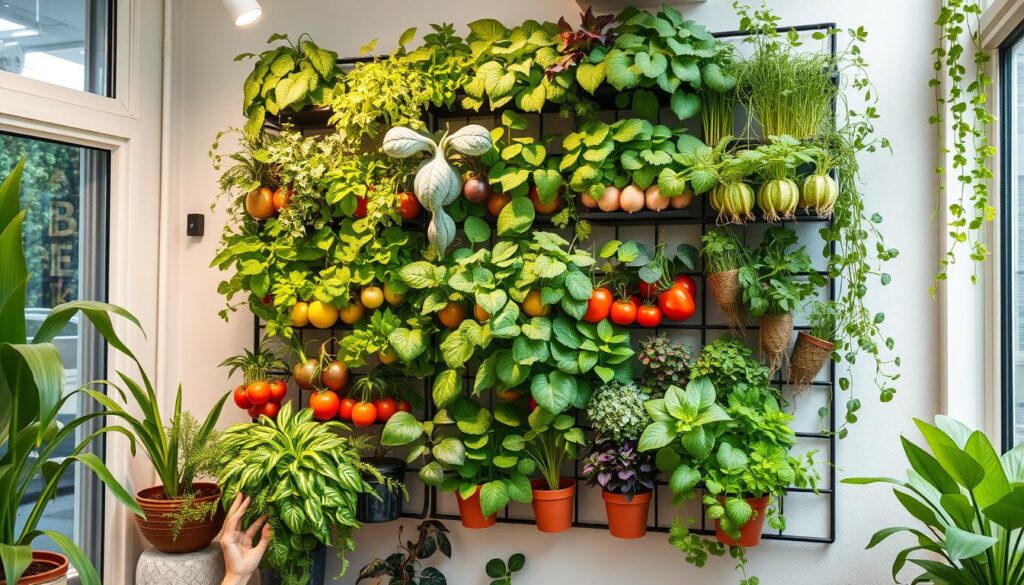
“With a little creativity and the right equipment, you can transform any indoor space into a thriving, productive garden.”
Soil and Nutrient Requirements for Indoor Growing
To grow a healthy indoor garden, you need to focus on the soil and nutrients. The right mix, compost, and nutrients are key for your plants’ health and growth.
Organic vs Synthetic Fertilizers
You can choose between organic and synthetic fertilizers for your indoor veggies. Organic options like compost or manure release nutrients slowly and naturally. Synthetic fertilizers give a quick nutrient boost but need more frequent use. Think about what your plants need and what you prefer to decide.
pH Balance Management
Keeping the right pH balance is vital for your plants to absorb nutrients well. Use a pH meter to check your soil’s acidity or alkalinity. Most veggies do best in slightly acidic soil, with a pH of 6.0 to 6.8. Regular pH checks and adjustments, like adding lime or sulfur, help your plants thrive.
Watering Schedules
- Set a regular watering schedule for your indoor veggies.
- Water when the top inch of soil feels dry, avoiding overwatering.
- Change your watering schedule based on plant size, temperature, and humidity.
- Use a watering can or drip irrigation to water evenly and prevent leaf splashing.
Understanding soil and nutrient needs helps you create a successful indoor garden all year.
Common Mistakes to Avoid in Indoor Vegetable Growing
Growing vegetables indoors needs careful attention and detail. Many beginners make mistakes that can harm their plants. Knowing these mistakes helps your garden grow well.
One big mistake is overwatering. Too much water can cause root rot. Always check the soil before watering and adjust your schedule as needed.
Not enough light is another issue. Plants need enough light, whether from the sun or grow lights. Without it, they grow poorly. Make sure your plants get enough light.
- Ensure your plants receive at least 6-8 hours of direct sunlight or the appropriate amount of artificial light.
- Position your plants close to windows or supplement with high-quality grow lights.
Pests can also be a problem in indoor gardens. Keeping an eye out and acting fast is important. Watch for pests and deal with them quickly.
Finally, nutrient deficiencies can slow down plant growth. It’s important to give plants the right nutrients. Test your soil and use the right fertilizers to keep nutrients balanced.
| Common Mistake | Potential Consequences | Preventive Measures |
|---|---|---|
| Overwatering | Root rot, disease, stunted growth | Check soil moisture regularly, adjust watering schedule |
| Insufficient light | Leggy plants, poor yields, stunted growth | Provide 6-8 hours of direct sun or use grow lights |
| Pest infestations | Plant damage, reduced yields, potential spread to other plants | Monitor plants regularly, use organic pest control methods |
| Nutrient deficiencies | Stunted growth, discoloration, reduced yields | Conduct regular soil testing, apply appropriate fertilizers |
By avoiding these mistakes and taking action, you can have a successful indoor garden. It will give you fresh vegetables all year.
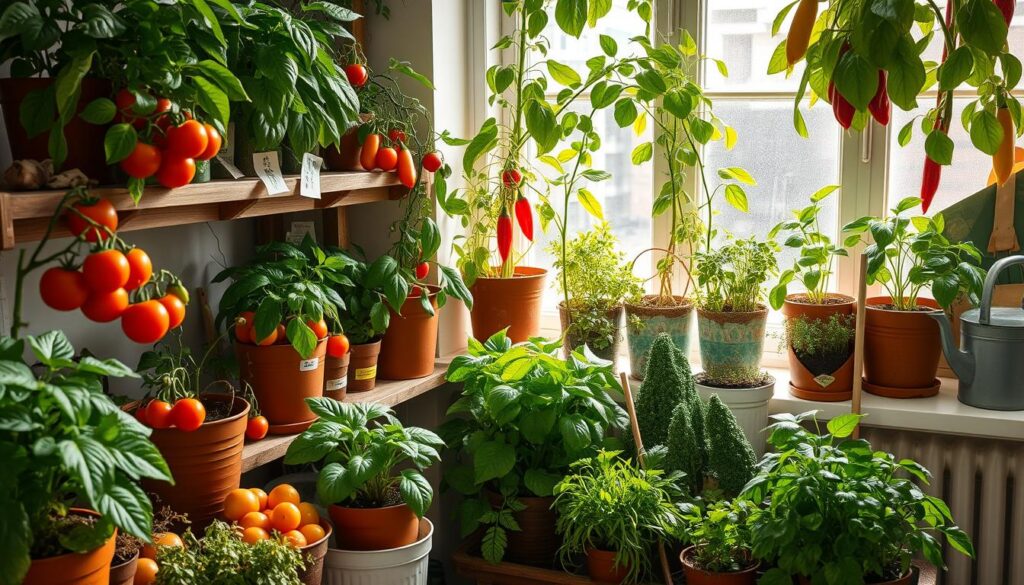
Natural Pest Control Methods for Indoor Gardens
Keeping your indoor garden healthy means watching out for pests like aphids and spider mites. Luckily, there are natural ways to fight these pests off.
Identifying Common Indoor Plant Pests
Aphids are small, green or black bugs that harm plants by sucking their sap. This can make leaves wilt and turn color. Spider mites, tiny spiders, spin webs and eat leaves, causing spots and color changes. Spotting these pests early is crucial for controlling them.
Organic Pest Solutions
Neem oil, made from the neem tree, is a great natural solution. Spray it on plants to kill aphids, spider mites, and other pests. Planting herbs like basil, marigolds, and chrysanthemums can also keep pests away.
Preventive Measures
- Make sure plants have good air flow to prevent pests.
- Check plants often and remove pests by hand or with water.
- Bring in beneficial bugs like ladybugs and lacewings to fight pests.
Using natural pest control and being proactive can keep your garden healthy and pest-free all year.
Seasonal Planning for Continuous Harvests
To have a full indoor garden all year, planning is crucial. Crop rotation and succession planting are key. They help you get the most from your garden and keep it full of food.
Crop rotation means growing different plants in the same spot over time. It keeps the soil rich and stops pests and diseases. By changing what you grow, your soil stays healthy and pests don’t take over.
Succession planting is when you plant new seeds or seedlings at different times. This way, you always have fresh food ready. Lettuce, spinach, and radishes are great for this, giving you a constant supply of greens and roots.

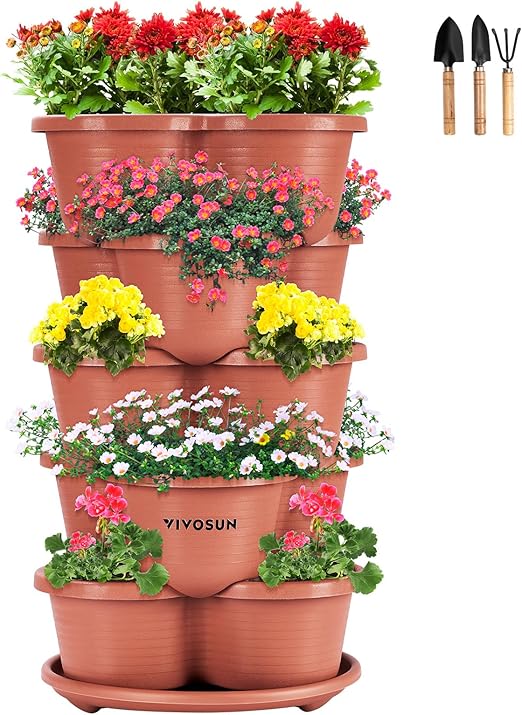
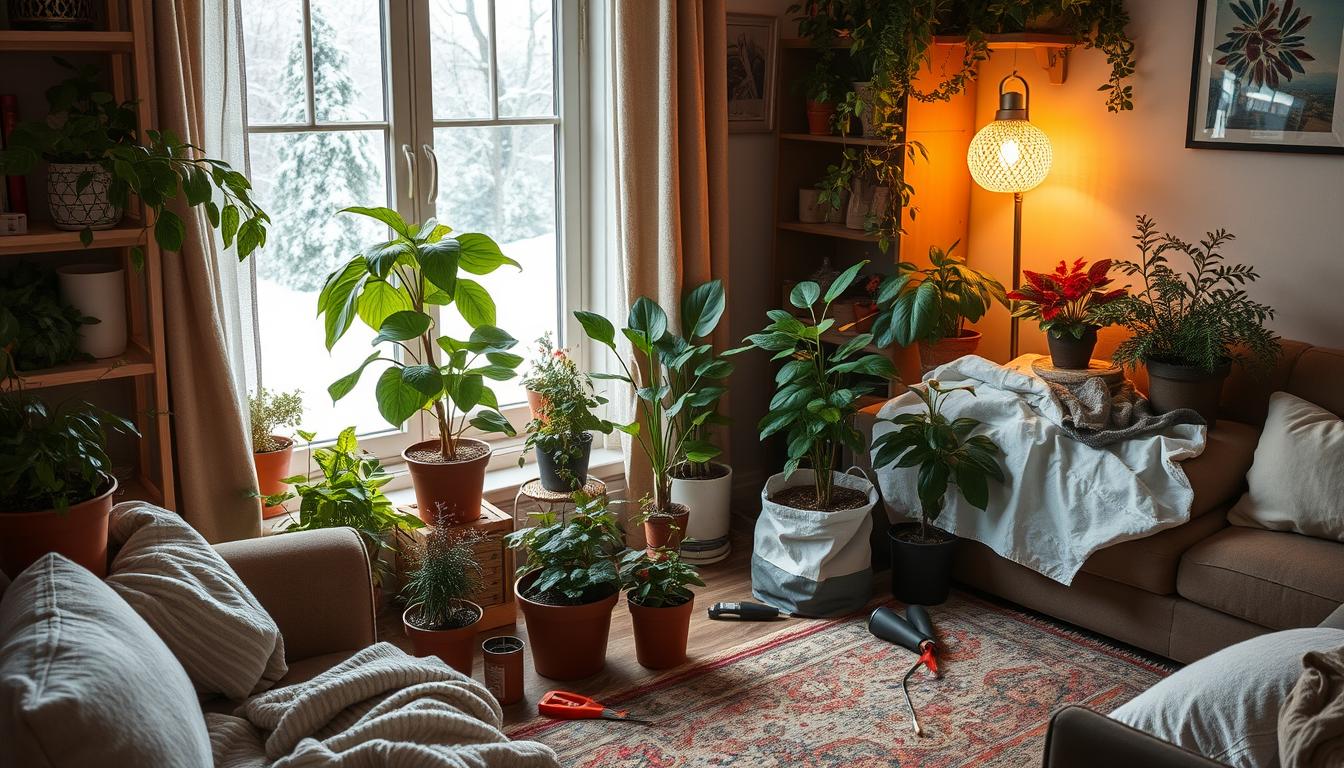
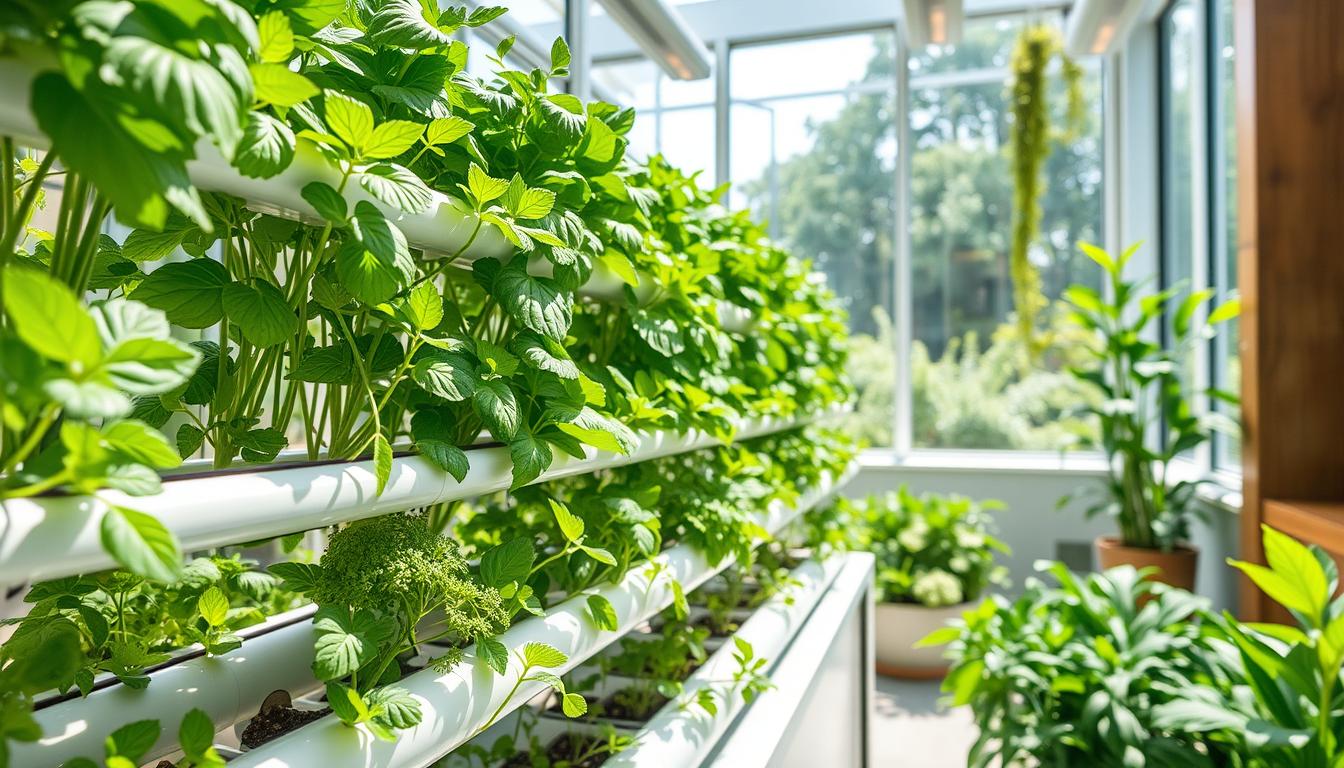


-
-
12 months
Tagged Bringing Plants Indoors, Houseplant Winter Care, Indoor Plant Maintenance, Winter plant care, Winter Plant Survival